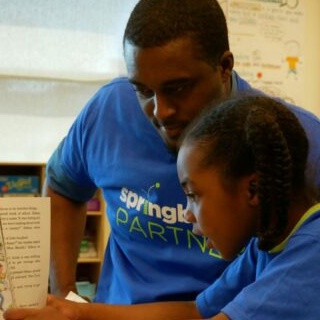Make reading like a conversation!
Reading a text aloud with your young one is widely recognized as one of the key practices caregivers can do at home to promote literacy. How can we make the most out of your precious story time? Try making reading like a conversation by practicing what’s called dialogic reading!
Dialogic reading is having a conversation about the book you are reading. It is interactive and involves talking about and reading a story. This strategy is a powerful way for our younger readers to develop an awareness of print and oral language. Conversation allows children the opportunity to expand their vocabulary and practice their word-sound awareness.
Encourage your child to interact with the text during story time and talk about what they notice.
Here’s how to try this at home! Follow the PEER framework:
Prompt your reader to talk about the book
Ask your child a question using a CROWD prompt.
Completion. Have your child complete the sentence.
Ex) The boy’s name is _______
Recall. Ask your child to recall important information.
Ex) Can you tell me what happened to the boy in the beginning of the store
Open-ended. Invite your child to tell what is happening in the picture.
Ex) Tell me what is happening in the picture
Wh-questions. These prompts typically start with what, where, when, why, and how.
Ex) What do you see in the picture? What do we call that?
Distancing. Ask questions that connect what is occurring in the story to your child’s own life.
Ex) Do you remember when we went to the store together?
Evaluate what your reader says
Is their answer correct? This will help you decide how to expand.
Expand your reader’s response by adding a little more information or rephrasing it
Add to what your child said to build vocabulary
If your child gave an incorrect answer, state the correct answer
Repeat the question you asked to solidify learning for your reader
Have your child repeat your expansion. This will help build vocabulary.
Imagine you and your child snuggled on a chair sharing a book. You are looking at a page that has a picture of a shopping cart. You could point to the picture and ask, “what is this?” (Prompt). The child responds, cart, and you follow up with “That’s right!” (Evaluation). Then, you could add “It is a shopping cart. Remember we used the shopping cart at the grocery store? (Expansion). Can you say shopping cart?” (Repetition).
This method allows you to engage in conversation on every page and can be used with almost any picture book. When selecting a text, consider books with rich detailed pictures or topics that interest your reader.
The next time you and your reader dive into a book, keep it conversational! Try out the PEER method and share about your experience below.


